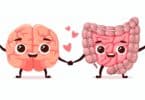
Researchers at Johns Hopkins Bloomberg School of Public Health in Baltimore compiled data on nearly 1,400 children, ages 3-17, diagnosed with autism. According to the study, more than one-third of the parents surveyed from 2007-2008 reported that their child’s diagnosis of autism changed over time; nearly 26 percent of the children were between the ages of 3 and 5, nearly 34 percent were between the ages of 6 and 11 and 35 percent of the children were between the ages of 12 and 17.
Researchers also found that children who had two or more co-occuring developmental or psychiatric conditions were five times more likely to keep their original autism diagnosis than those with fewer co-occurring diagnosis. Additionally, children diagnosed with a mild to severe learning disability were 11 times more likely to hold their autism diagnosis and children with developmental delays were nine times more likely to still have a diagnosis of autism later in life.
Researchers did not look at, however, why it was that certain conditions were more likely to be associated with a change in autism diagnosis than others. They speculated, however, that some behaviors, earlier in life, may seem to resemble autism, but may, in fact, be the result of another condition. For example, a lack of response in early childhood may be the cause of hearing problems, not autism.
“We don’t know what changed the diagnosis. However, we want to deliver the message that it’s important to look at other coexisting conditions, evaluate them before you make a diagnosis, and also recognize these conditions vary by development age,” stated study author Li-Ching Lee, associate scientist in the epidemiology and mental health departments at the School of Public Health.
Despite the findings, Dr. Joseph Horrigan, the assistant vice president and head of medical research for Autism Speaks, an advocacy group for autism spectrum disorders, says that parents and clinicians shouldn’t put too much thought into the findings. He says that the children involved in the study were not actually followed over time or examined; a method that could have changed the outcome of the study.
“I’d be a little cautious about over-interpreting whether this means there’s likely to be a change in an autism diagnosis or a loss of an autism diagnosis for an individual,” Horrigan stated.
Horrigan does also point out, however, that often, children with ASD experience other conditions, some of which may be treatable with medications or other forms of intervention.
“Up until the recent past, there’s been a tendency to spend most of the time and energy on the autism and autism diagnosis, and thinking about a treatment package that’s keyed directly to the autism,” Horrigan stated. “What’s important here is they are highlighting some of the most common co-occuring disorders, a number of which are readily amenable to treatments.”
Related Articles:
- Study: Smoking during Pregnancy Not Linked to Autism
- Study: Researchers Find Intestinal Bacteria Unique to Autistic Children
- ADHD Medications in Short Supply






